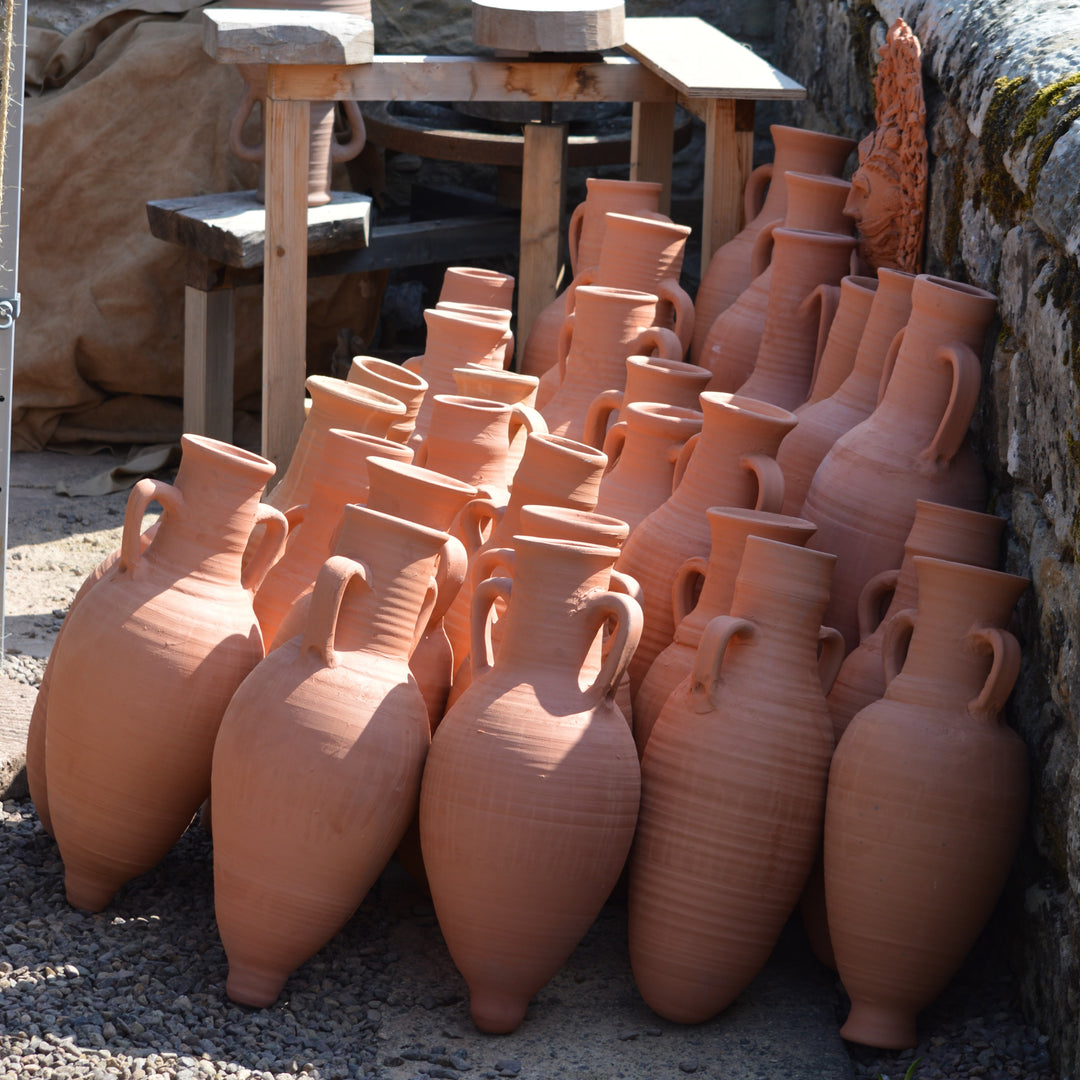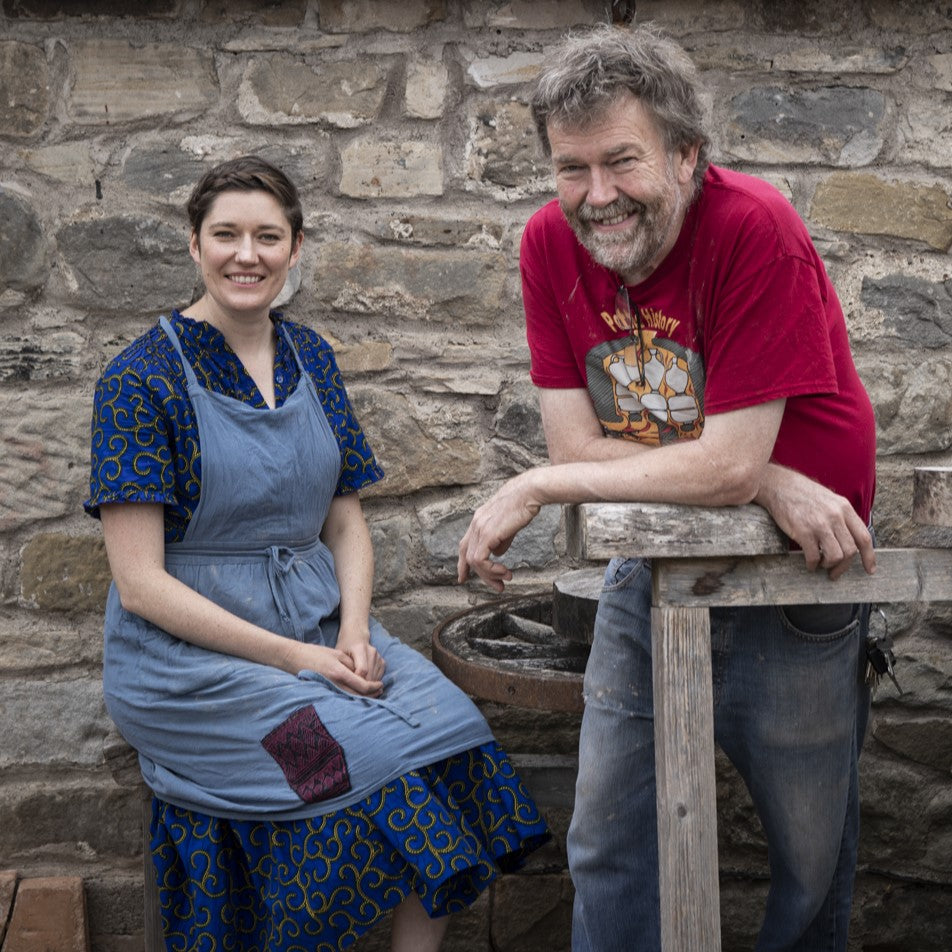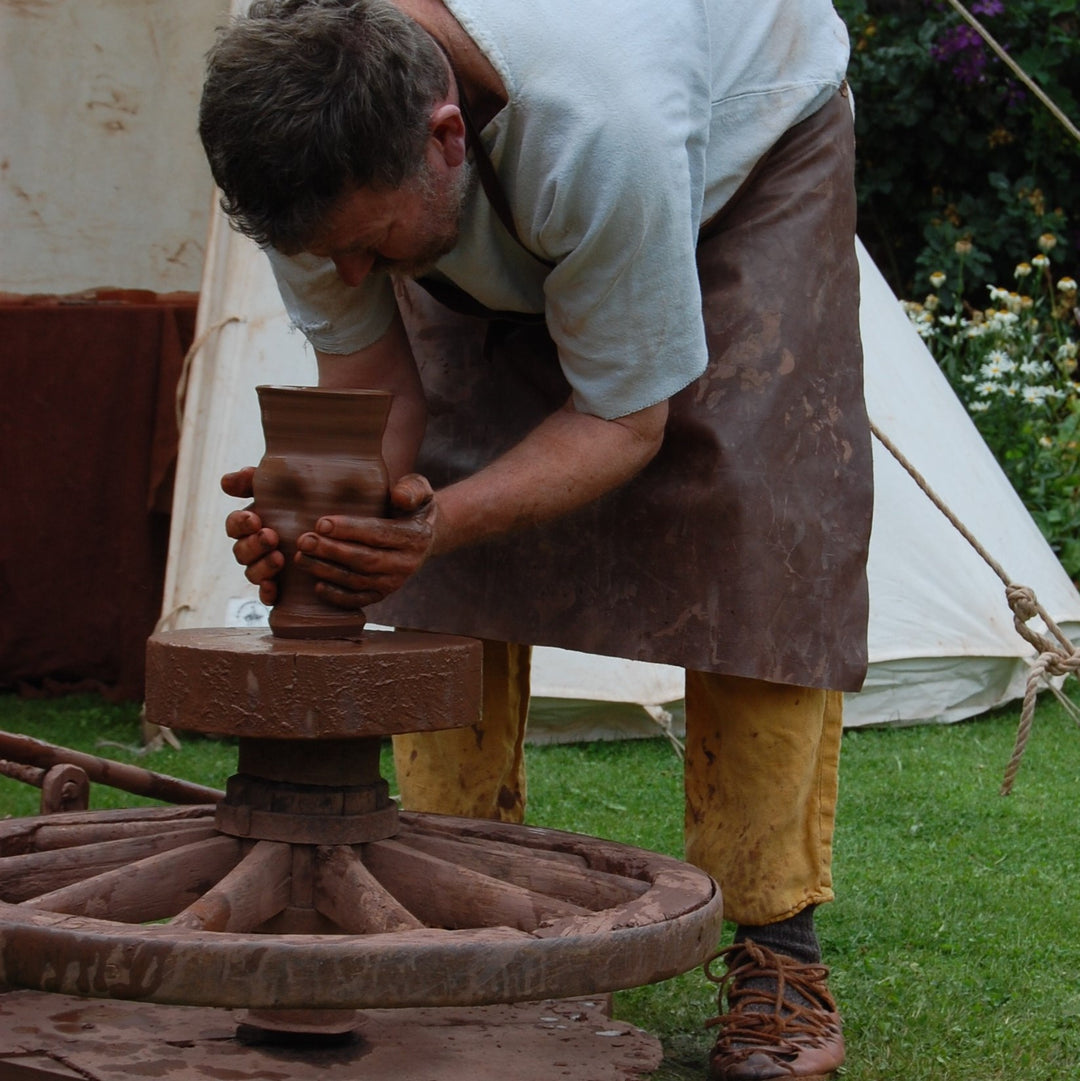Spouted Strainer, Walbrook Valley
Details
Examples of this style of spouted strainer were excavated from the site at Northgate House, Walbrook Valley, London, and date to around the 2 century CE. The site at Walbrook was a really exciting discovery as it changed our understanding of pottery import and production within the area. Previously it had been assumed that much of the pottery used within the London area had been imported. However, with the unearthing of 8 kilns in various forms, situated on the west side of a major tributary of the Walbrook, it became clear that many pottery items were, in fact, being produced locally, including these functional spouted strainers.
The spout of the strainer has been attached to the upper side of the bowl and holes pierced through to allow liquid to be drained. whilst larger particles will remain within the bowl. Able to hold a large capacity the bowl was clearly intended to hold a fair amount of liquid, with the spout located high up on the bowl it results in the liquid needing to be drained very slowly in order to avoid spilling any. What exactly they were using this strainer for is unclear, but due to the very small holes between the bowl and the spout, it is likely that it was used to strain liquids rather than more solid foodstuff, for example, beer or wine.
'Add To Cart' items are ready to send straight away. Please be aware that if bought alongside 'Pre-order' items, your order will be sent when all items are ready.
'Pre-order' items are made to order, and we will dispatch them as soon as we have handcrafted them for you; this usually takes 90 days, but international orders can take a little longer.
Materials
Earthenware, terracotta
Dimensions
Approx. 115 mm tall, 185 mm diameter, 240 length with handle
Production
This replica Roman pot has been hand made in Northumberland by Potted History, based on an original artefact. It has been fired to emulate the authentic Roman firing conditions to a temperature of over 1000°C, as the original potters would have done nearly two thousand years ago. This process often results in variations of the surface colour and texture, as is found with original Roman Pottery and giving each pot it's unique character.
Health and Safety
This is a Museum Quality Replica made using the tools and techniques that would have been used during the Roman era. As this is an unglazed pot with a porous surface it will absorb some of the flavours during use, which does add to the flavour of future dishes. However, it does also mean that this pot does not meet modern Health and Safety standards and therefore we do not advise that it is used. When the Romans used these pots, they would probably have cleaned them with water and then applied sufficient heat to the pot to ensure that all bacteria were killed. Heating to over 70°C for at least 10 minutes would have killed most disease-causing bacteria, and temperatures of 100°C would do even more.
Postage
All items are sent using a second-class postal service; if you wish to have an item sent first-class, please contact us for a quote. Many Thanks
Reference - Roman Pottery Production In The Walbrook Valley, Fiona Seeley and James Drummond-Murray
SHIPPING
'Add To Cart' items are ready to send straight away. Please be aware that if bought alongside 'Pre-order' items, your order will be sent when all items are ready.
'Pre-order' items are made to order, and we will dispatch them as soon as we have handcrafted them for you; this usually takes 90 days, but international orders can take a little longer.
We ship our fabulous replicas worldwide.
Shipping costs are worked out during checkout. They are based on where you are in the world and how heavy your parcel is, which can be very variable.
All items are sent using a second-class postal service. If you wish to have an item sent first class, please contact us for a quote. Many Thanks
RETURNS
If you aren't completely satisfied with your Potted History piece, please get in touch to organise a return. Email us at
clare@rothburycreates.co.uk
Then you can send it back at your own cost in an unused condition within 30 days, and we'll refund you for the cost of the item or items returned. If you include your order number with the returned package, that will speed things up. Please leave any original packaging intact.
Our returns address is:
Potted History, Gregory Court, Rothbury, Northumberland, NE65 7SW
PRODUCT VARIATION
Please be aware that due to items being handmade and finished, colour variations will occur during the making process, and each replica will have some differences. Also, know that the item photographed may not be the one that you receive, and colours can appear differently on different screens. Please ensure you look at all the images to get a fully formed idea of the item you are ordering as we try to capture the variations within the images we share. If you prefer a specific colour variation, please contact us before ordering.













